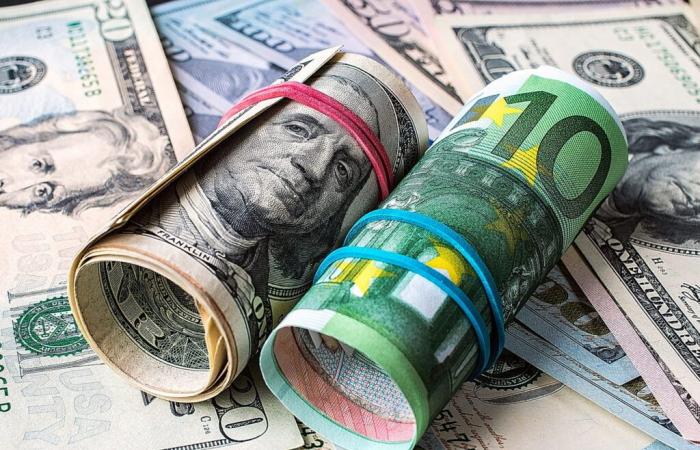Disappointing economic indicators and European political tensions are weighing heavily on the single currency, paving the way for a worrying new outlook for the euro.
The euro is faltering against a dollar that is more powerful than ever. Driven by disappointing economic indicators in the euro zone and a tense political situation, the single currency has reached its lowest level in two years. This situation fuels speculation about a possible fall below parity with the greenback, a scenario which could reshape global financial balances.
An economic and political context unfavorable to the euro
For several weeks, the euro has shown signs of weakness against the dollar. This Friday, the European currency reached a historic threshold of 1.0335 dollars, its lowest level since November 2022. The fall was precipitated by a series of mixed economic indicators in the euro zone, reflecting an economic under pressure.
Among these indicators, the PMI indices, which measure activity in the service and industrial sectors, showed a significant decline. The composite index, which fell to 48 in October, indicates a contraction, well below economists' expectations. These figures, associated with a downward revision of German GDP growth for the third quarter according to BFM BOURSE, reinforce concerns about the economic health of the euro zone.
The role of divergent monetary policies
At the same time, the monetary policies of central banks play a key role in this dynamic. While the European Central Bank may consider rate cuts to support a weakened economy, the US Federal Reserve is keeping rates high. This divergence strengthens the attractiveness of the dollar among investors.
European bond yields are also falling, a phenomenon that is increasing pressure on the euro. For example, German 10-year bonds saw their yields decrease to 2.257%, reflecting a climate of caution among investors.
The influence of the international political context
Beyond economic data, political tensions in Europe and around the world are weighing on market confidence. Uncertainties linked to political stability in France and Germany add to the impacts of the recent presidential elections in the United States. The election of Donald Trump, perceived as favorable to the dollar, exacerbates the weakness of the euro.
The protectionist policies planned by the American administration, in particular the increase in customs duties on Chinese imports, are helping to strengthen the greenback. As a result, economists predict a continued decline in the euro, with some even predicting a fall below parity with the dollar in the coming months.
Parity in sight?
The outlook for the euro remains gloomy. Several analysts, including those from Capital Economics, anticipate that the European currency could fall to 1 dollar, or even below, by the end of 2025. Deutsche Bank goes even further, estimating that the euro could reach 0.95 dollars if the American economic policies remain unchanged.
The combination of disappointing economic indicators, political tensions and divergent monetary policies is putting the euro under pressure. As the dollar continues to strengthen, the idea of parity between the two currencies is no longer an unlikely scenario, but a looming possibility.






